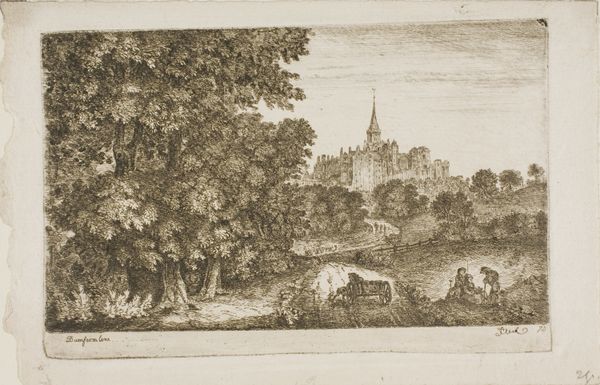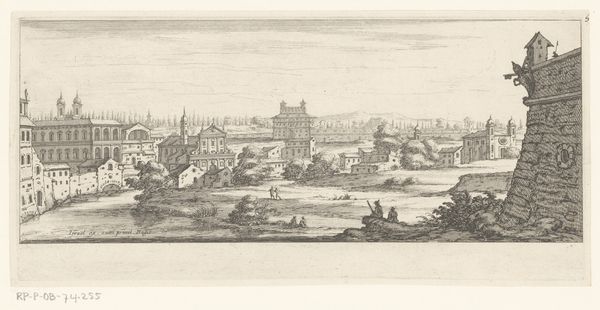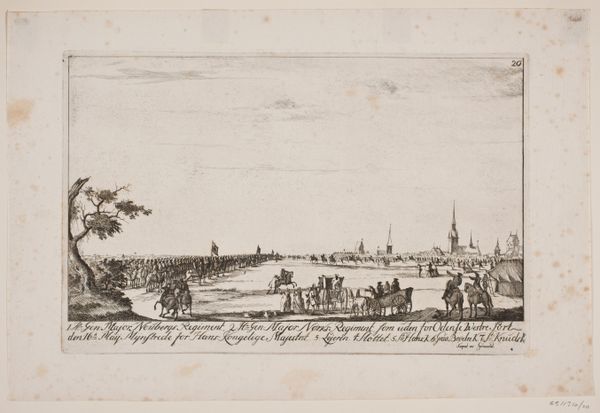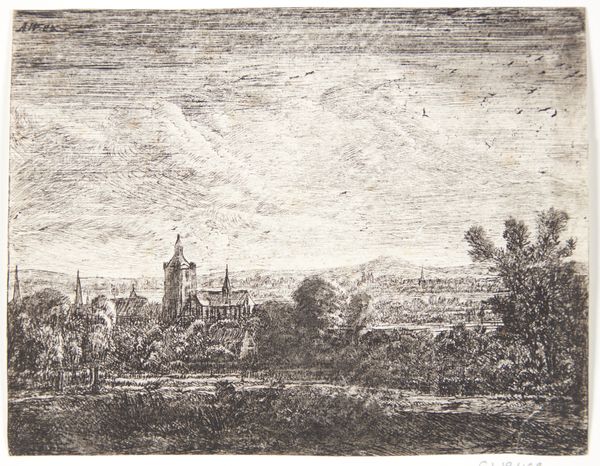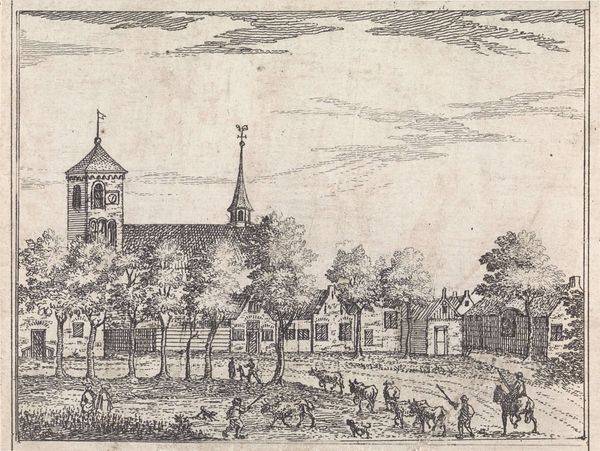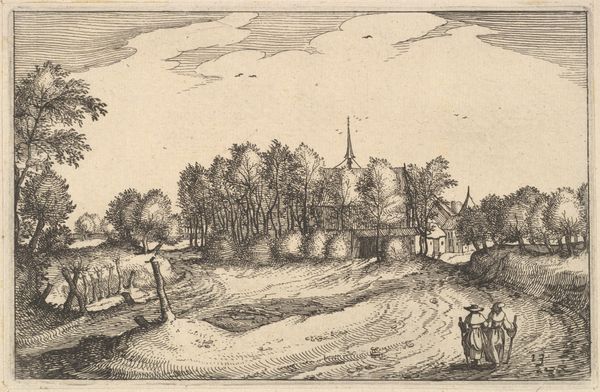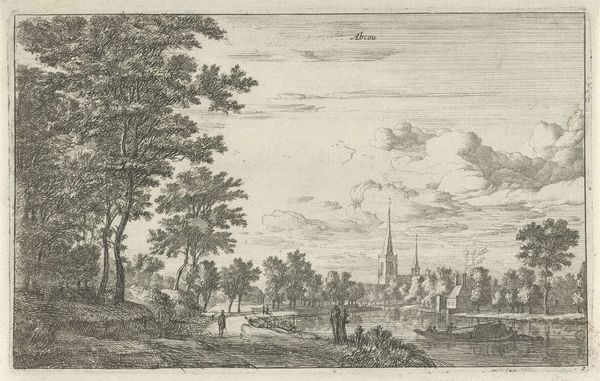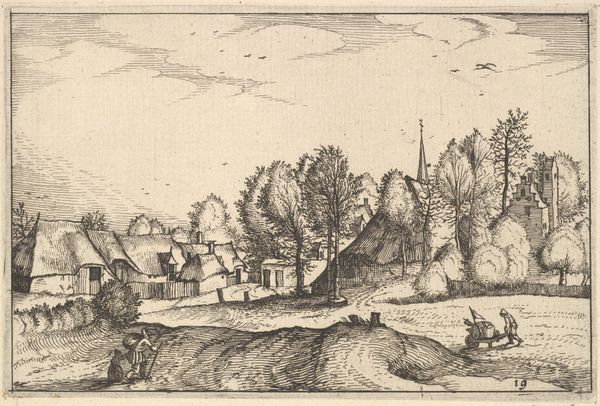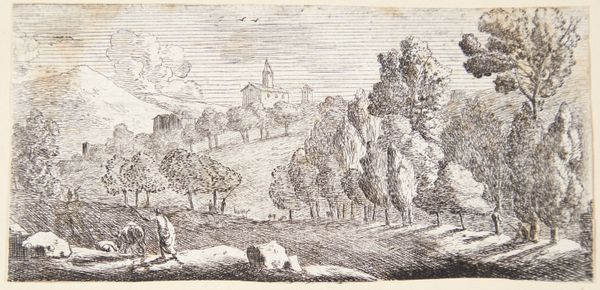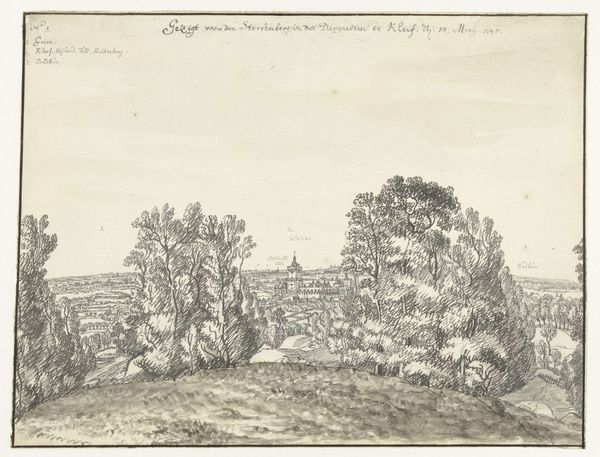
drawing, print, etching, paper
#
drawing
#
neoclassicism
# print
#
etching
#
landscape
#
paper
#
15_18th-century
#
cityscape
Dimensions: 3 × 8 1/8 inches
Copyright: Public Domain
Curator: Here we have "Dumfries from the Dock," an etching on paper crafted in 1777 by John Clerk of Eldin. A seemingly unassuming print that nonetheless intrigues, doesn't it? Editor: Intriguing indeed. My first impression is one of meticulous detail. Note the painstaking representation of laboring figures in the foreground juxtaposed with the towering church dominating the background skyline, achieved through the humble yet incredibly versatile medium of etching. Curator: Exactly. Clerk uses line and light to establish spatial depth, leading the viewer's eye from those workers at the dock, their implied social reality, to the architectural elements beyond. How do you see this interplay reflected in its materiality? Editor: The etching process itself emphasizes labor. Acid bites into metal, mirroring the ways human hands shape their surroundings. Note the repetitive lines mimicking textures, creating a tangible world with industrial ambition at its core. Dumfries presents itself proudly, the fruit of hard work, yet the medium remains transparent—it never conceals the making, even in its finer lines. Curator: The composition reveals a certain ideology as well. The dockworkers exist on a more earthly, natural plane, in stark opposition to the implied heavenly ascent embodied by that steeple and, further, its architectural rationality. This division tells a story of social order rendered palpable in the scene itself. Editor: I agree, and the etching further enables Clerk's control in creating such distinctions through a replicable format that reinforces an unequal system of viewership as the paper-made images move across societal strata and into broader distribution networks. How are people valued, what kind of labor does one perform, and what spaces one occupies—it is a deliberate act of portraying a society, its production and its hierarchical structuring. Curator: Certainly, the visual language directs us towards these considerations of power and perception. Editor: It forces us to examine labor not just within the frame, but beyond, with etching processes and material components essential to this rendering of a location. The print then is but an indexical document of many sites of labor and societal forces. Curator: Thank you. Editor: My pleasure. Examining "Dumfries from the Dock" allows for a multi-faceted exploration, making a simple cityscape a site of layered societal interpretation.
Comments
No comments
Be the first to comment and join the conversation on the ultimate creative platform.
